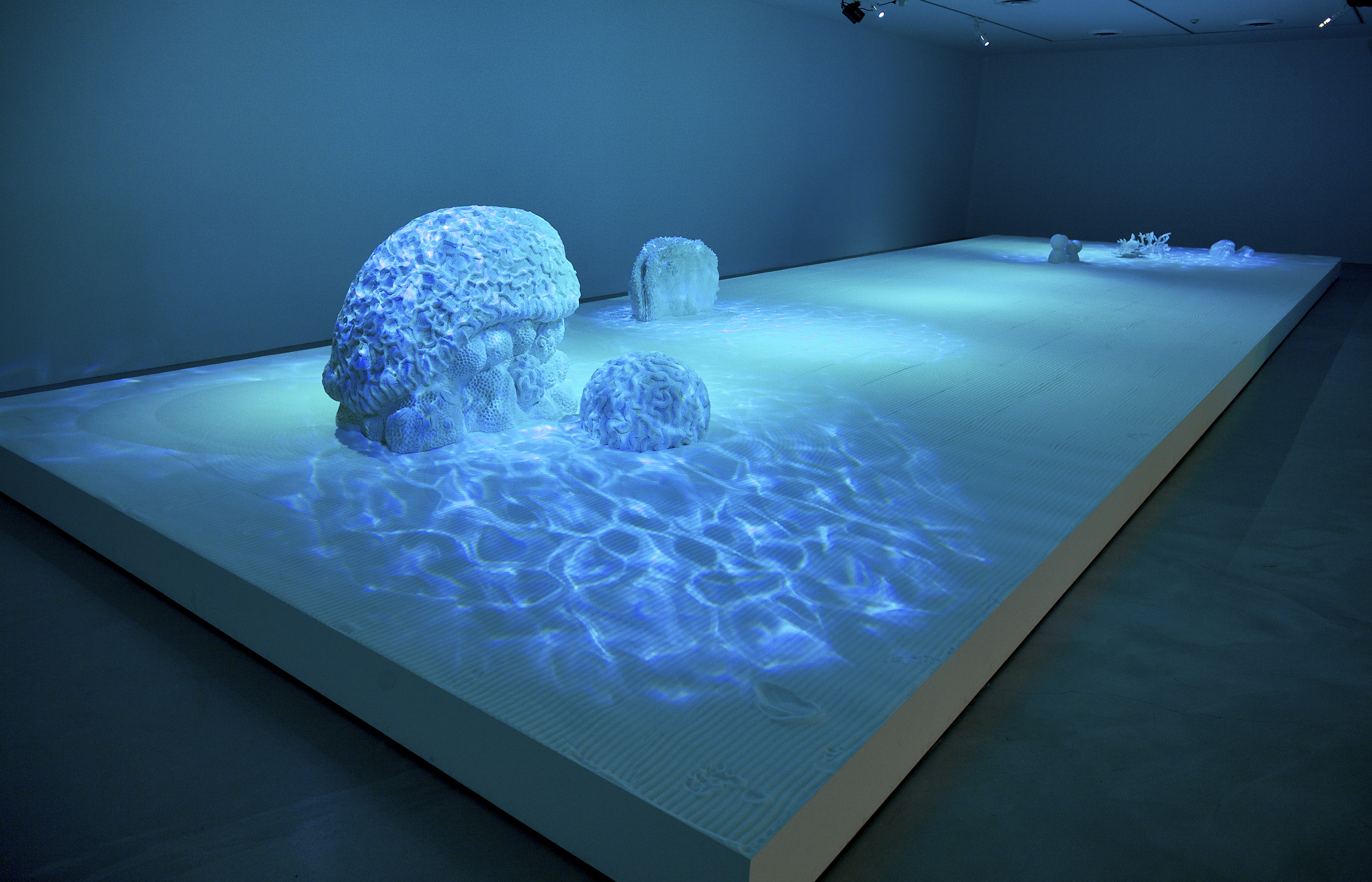Audio descriptions: Artworks in the exhibition Ken + Julia Yonetani: To Be Human

Ken + Julia YONETANI, Sweet Barrier Reef 2009, sugar, vegetable gum, polystyrene foam. Photo by Ian Hobbs. ©︎ Ken + Julia Yonetani. Courtesy of Mizuma Art Gallery.
This artwork is a large installation resting on a large, white plinth, approximately 6 metres long by 3 metres wide, and about 12 centimetres high. Placed on the plinth are clusters of white sculptures that resemble various types of coral. There are eight objects in total, and they vary in shape and size, ranging from 15 centimetres in diameter to 75 centimetres in diameter.
Commanding the space, when facing the longest side of the artwork, is the largest of the coral formations with a raised surface evocative of the contours of a brain. This formation and the smaller coral beside it reference a type of coral given the common name of ‘brain coral’ because of the winding pattern it presents and its similarity to that found in the anatomy of the human brain. At the far back of the plinth towards the centre is a structure akin to a clam with two parts fanning up from the sandy surface and closely facing each other. On the left hand side are five more coral formations. All are covered in small indentations across their rounded surfaces. The two in the back corner have the tentacles of a sea anemone draped over the top of each of them.
The sculptures are formed from sugar and vegetable gum, ingredients often used in cake decorating. They have a polystyrene centre, which cannot be seen.
The surface of the plinth is covered in granulated white sugar, which has been meticulously raked like gravel in a sekitei – a traditional Japanese stone garden. The lines in the raked sugar grains run lengthways on the plinth. Surrounding the coral sculptures, the sugar has been raked so the lines appear in concentric circles radiating from the clusters of coral. This mimics the way that gravel is raked around clusters of rocks in a traditional Japanese stone garden.
Each cluster of sculptures is spot lit with blue wave lights that resemble rippling water. The whole gallery is drenched in blue light, as if it is underwater.
This artwork references the sugarcane industry’s agricultural practices, and its adverse effects on coral health. The use of sugar further serves as a metaphor for human consumption and environmental impact. The artists were inspired to create this work after seeing the impact of sediment in Okinawa, Japan and the Great Barrier Reef, Australia. More broadly, the work references the destruction of the Great Barrier Reef as a result of climate change, river runoff, dredging and overfishing.

